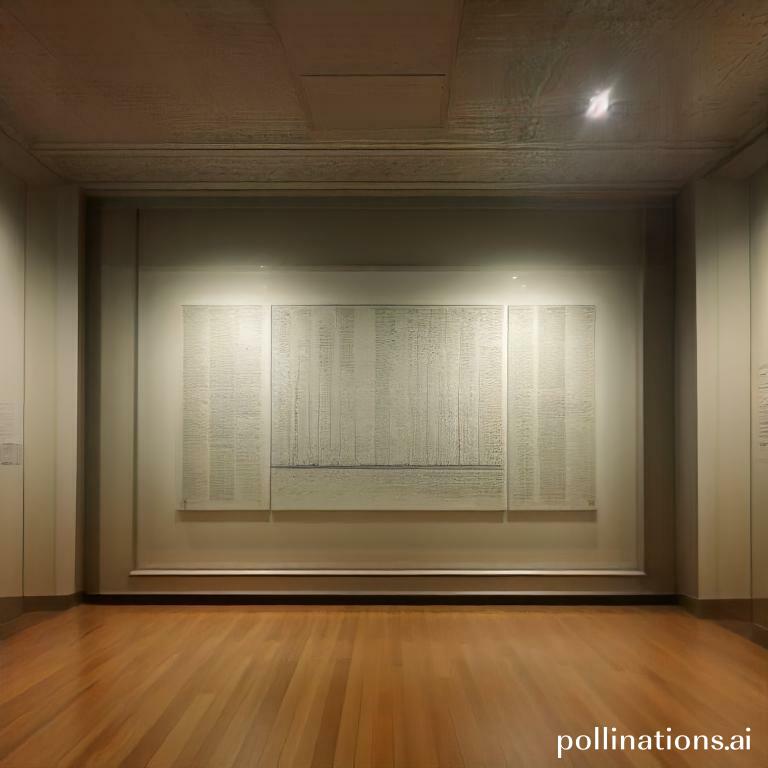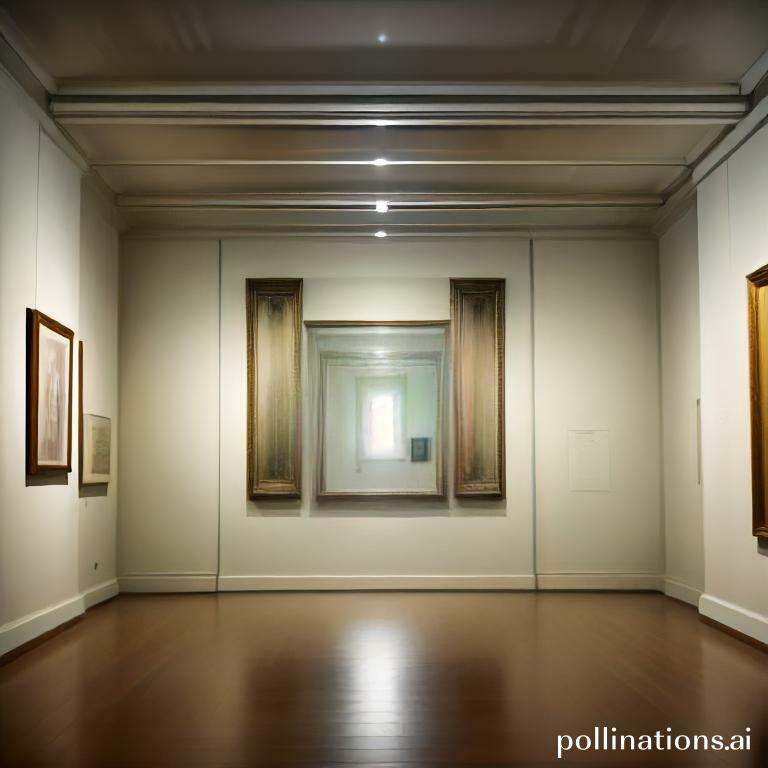
Check Out The Exclusive Deals Waiting For You! ∇
No products found.
How HVAC Systems Help Maintain Humidity Levels in Museums
In museums, maintaining appropriate humidity levels is crucial for preserving and protecting valuable artifacts and artworks. HVAC (Heating, Ventilation, and Air Conditioning) systems play a vital role in controlling humidity and creating a stable environment. Let’s ponder the different aspects of how HVAC systems help maintain humidity levels in museums.
1. The Functionality of HVAC Systems in Controlling Humidity
HVAC systems are designed to regulate temperature and humidity levels in indoor spaces. They consist of various components such as air handlers, condensers, and evaporators that work together to maintain a comfortable and controlled environment. By monitoring and adjusting the moisture content in the air, HVAC systems can prevent excess humidity or dryness, ensuring the preservation of delicate museum artifacts.
2. The Role of Dehumidifiers in Reducing Excess Moisture
Excess moisture in museums can lead to mold growth, corrosion, and deterioration of artworks. Dehumidifiers are an integral part of HVAC systems that help reduce excess moisture by extracting water vapor from the air. These devices use condensation or absorbent materials to remove humidity, creating a drier environment and preventing potential damage to sensitive museum collections.
3. Humidifiers: Balancing Humidity in Dry Environments
In certain regions or during specific seasons, museums may face challenges with low humidity levels. Dry air can cause shrinkage, cracking, and brittleness of materials, posing risks to delicate artworks. HVAC systems equipped with humidifiers can introduce controlled amounts of moisture into the air, balancing humidity and mitigating potential damage. This ensures the longevity and preservation of museum exhibits in dry environments.
4. The Importance of Regular HVAC Maintenance for Humidity Control
To ensure optimal humidity control in museums, regular HVAC maintenance is crucial. Routine inspections, filter replacements, and calibration of humidity sensors help identify and address any issues that may impact the functionality of the system. By proactively maintaining HVAC systems, museums can prevent fluctuations in humidity levels, safeguarding their collections and providing a stable environment for visitors.
Best Practices for Balancing Humidity in Museums
Museums play a crucial role in preserving and showcasing our cultural heritage. Albeit, the delicate nature of many artifacts requires careful attention to humidity levels within museum spaces. In this section, we will investigate the best practices for monitoring and controlling humidity to ensure the longevity of these precious collections.
1. Monitoring Humidity Levels in Museum Spaces
Accurate monitoring of humidity levels is the first step in maintaining an optimal environment for museum artifacts. Museums should invest in reliable hygrometers to regularly measure humidity. These devices should be strategically placed throughout exhibition halls and storage areas to capture variations in different zones.
Regular data collection is essential for identifying patterns and potential issues. Museum staff should record the humidity readings at specific intervals and maintain a comprehensive log. This data will help identify areas where humidity fluctuations are more pronounced and guide subsequent actions.
2. Strategies for Controlling Humidity Fluctuations
Controlling humidity fluctuations requires a proactive approach. Museums should prioritize sealing exhibition halls and storage areas to minimize the ingress of external moisture. Proper insulation and the use of vapor barriers can significantly reduce the impact of external factors on humidity levels.
Another effective strategy is to limit visitor access to sensitive areas. Human presence can introduce moisture and disrupt the carefully controlled environment. By implementing controlled access policies and integrating physical barriers, museums can minimize the risk of sudden humidity changes.
3. Implementing Proper Ventilation Systems
Adequate ventilation systems are crucial in maintaining stable humidity levels. Museums should invest in HVAC (Heating, Ventilation, and Air Conditioning) systems specifically designed for museums. These systems allow for precise control of humidity, ensuring a consistent environment for artifacts.
In addition to HVAC, museums can also consider the use of dehumidifiers and humidifiers in areas where fluctuations are more pronounced. These devices provide localized control and can be particularly useful in storage rooms or exhibition spaces with unique requirements.
4. Using Humidity Control Devices and Equipment
Museums can further enrich their humidity control efforts by utilizing specialized devices and equipment. Desiccant dehumidifiers, for example, are highly effective in removing excess moisture from the air. These devices utilize moisture-absorbing materials to maintain optimal humidity levels.
Humidity control cabinets are another valuable tool for museums. These cabinets utilize advanced technology to regulate humidity within a specific range. They are particularly useful for storing sensitive artifacts that require precise humidity conditions.
| Humidity Control Devices | Benefits |
|---|---|
| Desiccant Dehumidifiers | Effectively removes excess moisture |
| Humidity Control Cabinets | Regulates humidity within a specific range |
Case Studies. Successful Humidity Control in Museums
In this section, we will scrutinize two case studies that highlight the importance of humidity control in museums and the successful solutions implemented by renowned institutions.
Case Study 1: The Louvre Museum’s Humidity Control System
1.1 Achieving Stable Humidity Levels in Art Galleries
The Louvre Museum, home to some of the world’s most treasured artworks, has implemented a cutting-edge humidity control system to ensure the preservation of its valuable collection. By maintaining stable humidity levels in its art galleries, the museum protects the delicate materials used in the creation of these masterpieces.
1.2 The Role of HVAC Experts in Designing Custom Solutions
To achieve the desired humidity levels, the Louvre Museum collaborated with HVAC experts who designed a custom solution tailored to the specific needs of the artworks and the museum’s infrastructure. This involved the installation of state-of-the-art humidity control equipment and the development of sophisticated algorithms to monitor and adjust humidity levels in real-time.
Case Study 2: The Smithsonian’s Approach to Humidity Control
2.1 Preservation Techniques for Different Types of Artifacts
The Smithsonian Institution, a renowned cultural and research organization, employs a comprehensive approach to humidity control to safeguard its diverse collection of artifacts. Preservation techniques vary depending on the materials and vulnerabilities of each artifact, ensuring their long-term protection.
2.2 Collaborations Between HVAC Specialists and Curators
At the Smithsonian, collaborations between HVAC specialists and curators play a crucial role in humidity control. By working closely together, these experts create customized environments that meet the specific requirements of different artifacts. This collaboration ensures that the humidity levels are precisely controlled to prevent damage and preserve the historical and cultural significance of each piece.
These case studies demonstrate the significance of humidity control systems in museums and the collaborative efforts between HVAC specialists, curators, and other experts. By implementing tailored solutions and employing preservation techniques, museums can safeguard their collections for future generations to appreciate and enjoy.

The Benefits of Proper Humidity Control in Museums
Proper humidity control is crucial in museums to ensure the long-term preservation of art and artifacts. By maintaining the ideal humidity levels, museums can protect delicate items from deterioration and extend their lifespan.
1. Ensuring Long-Term Preservation of Art and Artifacts
Humidity fluctuations can have a detrimental effect on art and artifacts. High humidity can encourage the growth of mold and fungi, leading to irreversible damage. In contrast, low humidity can cause materials to become brittle and prone to cracking or warping. By controlling humidity levels within a narrow range, museums can prevent these issues and preserve their collections for future generations.
2. Preventing Mold Growth and Damage
Mold thrives in environments with high humidity, making museums susceptible to its growth. Mold can not only damage the artwork itself but also release spores that can spread to other pieces in the collection. By implementing proper humidity control measures, museums can create an inhospitable environment for mold, safeguarding their valuable exhibits.
3. Enhancing Visitor Comfort and Experience
Humidity control is not only essential for the preservation of art but also for the comfort of museum visitors. Excessive humidity can make the air feel heavy and uncomfortable, leading to a less enjoyable experience for patrons. By maintaining optimal humidity levels, museums can create a pleasant atmosphere that encourages visitors to traverse and appreciate the exhibits.
| Benefits of Proper Humidity Control in Museums |
|---|
| Ensuring Long-Term Preservation of Art and Artifacts |
| Preventing Mold Growth and Damage |
| Enhancing Visitor Comfort and Experience |

Challenges and Considerations in Humidity Control for Museums
In the realm of museum preservation, humidity control plays a vital role in ensuring the longevity and integrity of precious artifacts. This section delves into the challenges and considerations that museums face in terms of maintaining optimal humidity levels.
1. Budget Constraints and Financial Planning
Touching on humidity control, museums often encounter budget constraints that can limit their options. Creating and maintaining a controlled environment requires specialized equipment and ongoing monitoring, which can be costly. Museums must carefully assess their financial resources and plan accordingly to strike a balance between effective humidity control and budget limitations.
2. Striking a Balance Between Preservation and Energy Efficiency
Preservation is paramount in museums, but energy efficiency is also a growing concern. Striking a balance between preserving artifacts and reducing energy consumption can be a complex task. Implementing energy-efficient humidity control systems, such as desiccant dehumidifiers or HVAC upgrades, can help museums achieve this delicate equilibrium.
3. Collaborating with Conservation Experts and Curators
Humidity control in museums requires collaboration between conservation experts, curators, and facility managers. Conservation experts possess the knowledge and expertise to determine the specific humidity requirements for different types of artifacts. Curators play a crucial role in identifying artifacts that are particularly sensitive to humidity fluctuations. By working together, museums can develop comprehensive humidity control strategies tailored to the unique needs of their collections.
Conclusion
Proper humidity control is crucial for preserving artifacts and artwork in museums. Maintaining a consistent relative humidity level between 40-60% can prevent damage caused by fluctuations in moisture. Installing a reliable HVAC system, using dehumidifiers and humidifiers, and sealing the building envelope can help regulate humidity levels. It’s also important to monitor humidity regularly and make adjustments as needed. By taking these steps, museums can protect their collections for future generations to enjoy.
DIY enthusiasts can also benefit from humidity control in their woodworking and crafting projects. Using a moisture meter to test wood before starting a project and storing finished pieces in a controlled environment can prevent warping and cracking. Additionally, using a dehumidifier in a workshop can help prevent rust and corrosion on tools and machinery. By paying attention to humidity levels, DIYers can ensure their projects last for years to come.
Read Also:
1. Role of HVAC in humidity regulation
2. Maintaining humidity during renovations

